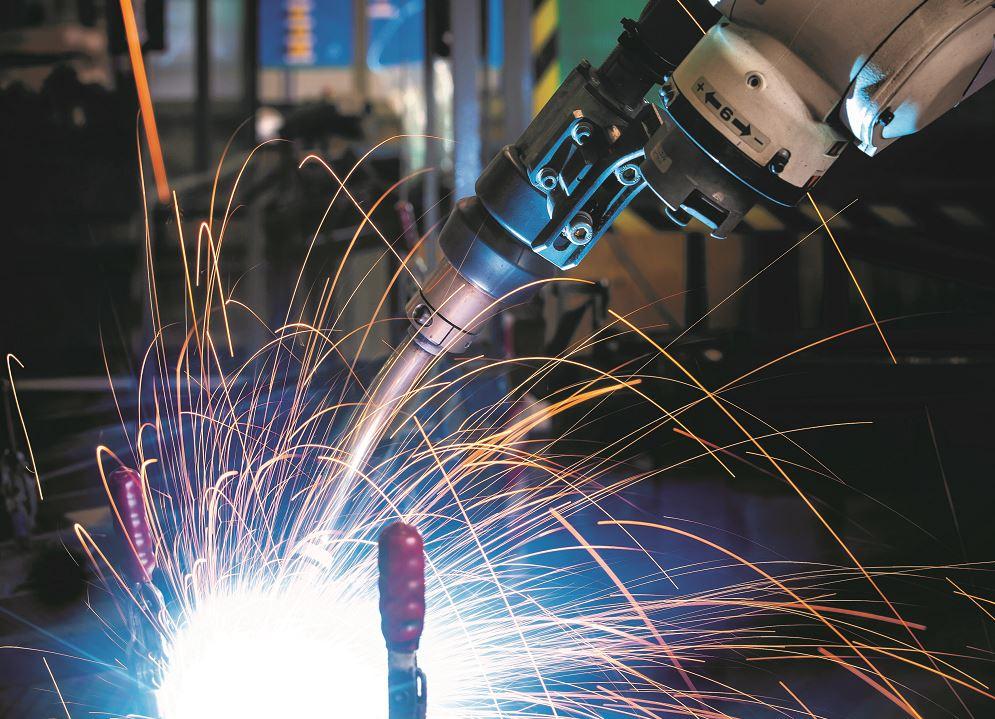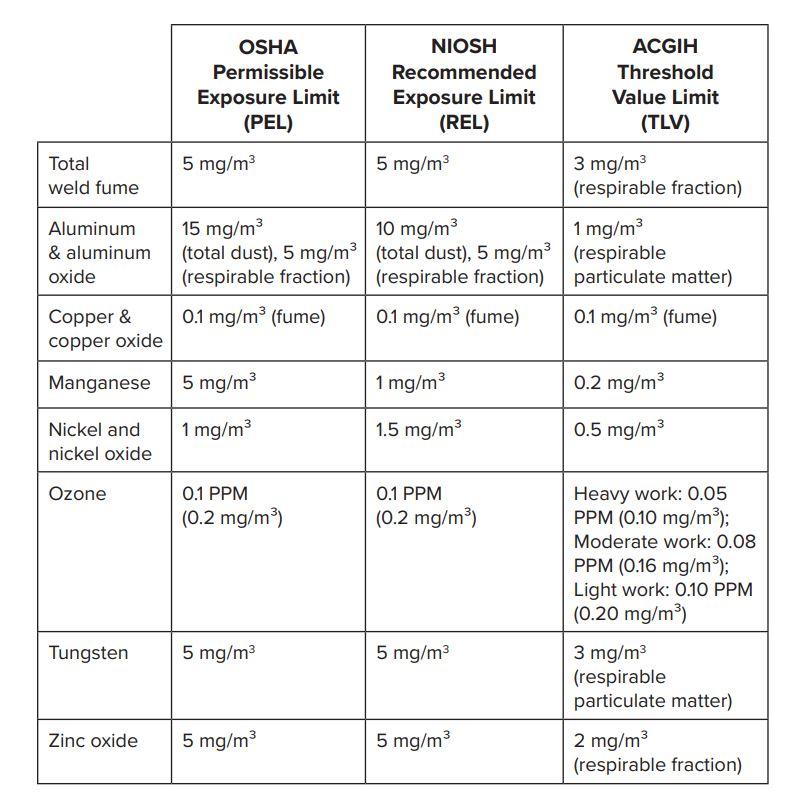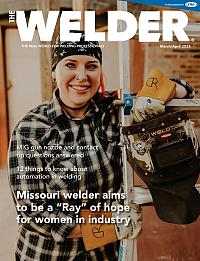Applications and Vent Mapping Engineer
- FMA
- The Fabricator
- FABTECH
- Canadian Metalworking
Categories
- Additive Manufacturing
- Aluminum Welding
- Arc Welding
- Assembly and Joining
- Automation and Robotics
- Bending and Forming
- Consumables
- Cutting and Weld Prep
- Electric Vehicles
- En Español
- Finishing
- Hydroforming
- Laser Cutting
- Laser Welding
- Machining
- Manufacturing Software
- Materials Handling
- Metals/Materials
- Oxyfuel Cutting
- Plasma Cutting
- Power Tools
- Punching and Other Holemaking
- Roll Forming
- Safety
- Sawing
- Shearing
- Shop Management
- Testing and Measuring
- Tube and Pipe Fabrication
- Tube and Pipe Production
- Waterjet Cutting
Industry Directory
Webcasts
Podcasts
FAB 40
Advertise
Subscribe
Account Login
Search
Why aluminum welding fumes can be hazardous without proper precautions
How welders can understand and mitigate health risks of welding nonferrous metals
- By Kyle Billy
- Updated April 10, 2023
- April 10, 2023
- Article
- Aluminum Welding

Welders and their employers should understand the hazards and health risks associated with the weld fumes generated while welding nonferrous metals such as aluminum. RoboVent
Aluminum welding creates hazardous fumes that can cause damage all through the body, including the brain and nervous system. How much weld fume exposure is too much? And how can shops reduce exposure risks for welders? Here’s what welders and welding/fabricating companies should know about the hazards of aluminum welding.
Composition of Aluminum Welding Fumes
Thermal processes like welding produce very small (submicron) particulates that can be inhaled into the lungs and absorbed into the body through the respiratory system. While all welding fumes are hazardous when inhaled, the specific health risks depend on the composition of the fume. The base materials and filler metals used determine weld fume composition. When welding nonferrous metals, the high heat of the welding process produces a mix of metal oxides; fumed, unoxidized metallic particulates; shielding gases; and ozone.
Aluminum welding fumes contain fumed particles of aluminum and aluminum oxide along with other metals used in the alloy, including copper, zinc, magnesium, silicon, manganese, and lithium. While some fume is produced by the base metal, a significant portion comes from consumables used in the welding process.
Tungsten inert gas (TIG) or metal inert gas (MIG) are commonly used for aluminum welding applications. Each method will produce different kinds of fumes and pose different health risks:
- The majority of MIG welding fume comes from the consumable. Consumables for nonferrous metals usually contain other substances such as silicon, magnesium, zinc, or other trace metals.
- TIG welding uses tungsten welding rods, which create inhalable fumed tungsten during the welding process.
Aluminum MIG and TIG welding also tend to produce high levels of ozone, resulting from a reaction between the ultraviolet radiation produced by the welding arc and oxygen in the air. Aluminum welding using an aluminum filler with silicon tends to produce the highest levels of ozone. Aluminum welding fumes may also contain other gases including carbon dioxide, carbon monoxide, and nitrogen dioxide.
Health Risks of Aluminum Welding Fume Exposure
Exposure to fumed aluminum and aluminum oxides can cause both acute and chronic conditions ranging from lung disease to nervous system damage. Acute symptoms of aluminum weld fume exposure include:
- Irritation of the eyes, nose, throat, and lungs.
- Metal fume fever, an acute flu-like illness caused by inhaling metals and metal oxides. Symptoms include cough, chills, and muscle aches.
Long-term exposure can lead to a number of chronic conditions:
- Lung problems may include occupational asthma; chronic obstructive pulmonary disorder (COPD); chronic bronchitis; and aluminosis, an incurable lung disease that results in permanent scarring of the lungs (fibrosis).
- Aluminum also has been implicated in neurodegenerative disorders and brain diseases such as Alzheimer’s, Parkinson’s, and multiple sclerosis, though the role of aluminum or aluminum oxide exposure in these diseases requires additional study.
- Manganese, commonly present in MIG welding fumes, is known to cross the blood-brain barrier and may result in manganism, a neurodegenerative disease similar to Parkinson’s. Symptoms include tremors, difficulty walking, and facial spasms.
- Tungsten exposure in TIG welding may lead to pulmonary fibrosis; eye, skin, nose, and respiratory irritation; nausea; and reproductive effects.
Exposure to ozone produced by aluminum welding has both short- and long-term health impacts. Short-term effects include eye, nose, throat, and lung irritation; headaches; and temporarily reduced lung function. Long-term health impacts of ozone exposure include asthma and chronic lung disease.
Occupational Exposure Limits for Aluminum Welding Fumes
In the U.S., the Occupational Safety and Health Administration (OSHA) sets permissible exposure limits (PELs) for weld fumes as a whole and for individual elements that may be found in weld fumes. These PELs represent a legal limit; shops are responsible for making sure that welders are not exposed to fume and fume constituents at levels above the PELs.
Shops also should be aware of exposure limits recommended by the National Institute for Occupational Safety and Health and the American Conference of Governmental Industrial Hygienists. These guidelines, based on scientific evidence of health impacts, are often lower than OSHA’s PEL (see Figure 1). Although they are not legally binding, employers may choose to aim for stricter limits to enhance employee safety and reduce health risks.

FIGURE 1. PELs and recommended exposure limits for selected airborne contaminants are presented as eight-hour time-weighted averages.
What About Combustion Risks?
In addition to the health impacts of welding fumes, companies also may need to consider possible combustion risks. It is commonly believed that weld fumes are not combustible because the material is already oxidized by the welding process. However, scientific studies have found that, in many cases, weld fumes contain a mix of both oxidized and unoxidized material. Unoxidized aluminum dust is highly explosive under the right conditions. For this reason, it is usually advisable to have welding fumes tested to determine their explosive potential, including Kst and Pmax values (known as the explosion indices). If the weld fume is determined to be combustible, appropriate precautions must be taken when designing the dust collection system.
Designing A Control Strategy for Welding Fume
It is important to have a control strategy in place due to the risks associated with exposure to respirable metals and metal oxides from welding nonferrous material. When designing a control strategy for hazardous welding fumes, it is important to keep the Hierarchy of Controls in mind (see Figure 2). Under this principle, shops must attempt strategies from the top of the hierarchy (such as elimination of hazards) before relying on strategies at the bottom (such as implementing administrative controls). For example, companies cannot simply require employees to rely on personal protective equipment (PPE) to reduce weld fume exposure if it is possible to meet the PEL using engineering controls, such as dust collection and ventilation.
Air Quality Testing and Monitoring
The first step in establishing a weld fume mitigation strategy should be to determine current exposure levels. Testing also should be used to validate systems once they are in place. Air quality testing may involve one or both of the following:
- Air quality meters or sensors to measure the levels of particulate and gaseous emissions at various locations in the facility.
- Wearable exposure monitors to determine exposure levels for individuals as they go about their normal shift activities.
Dust Collection and Ventilation Systems
Eliminating the use of aluminum and welding filler rods usually is not an option. That means engineering controls like dust collection and ventilation are typically the first line of defense against hazardous aluminum welding emissions.
When possible, experts prefer a source capture system for weld fume extraction. These systems capture fumes close to the source to keep them out of the breathing zone and prevent them from propagating through the facility:
- For manual welding, the system must pull fumes away from the welder’s face. Repositioned fume arms and welding stations with backdraft or sidedraft plenums are commonly used for smaller pieces. For MIG welding, fume extraction guns attached right onto the weld torch are another option.
- Robotic welding should be enclosed under a hood where possible. Hood design is very important for the overall efficiency of the system. The less air that needs to be moved, the less energy is required to capture the fume.
In most cases, the source capture system will be ducted to an industrial dust collector, which filters contaminants out of the air for disposal and returns clean, filtered air to the facility. If source capture is not possible (for example, due to the size of the parts or the use of overhead cranes), weld fumes may be controlled through general ventilation or an ambient dust collection system. An ambient system must be designed to pull fumes away from where people are working and return clean, fresh air to the work zone to dilute contaminants to safe levels. For both source capture and ambient capture, air filtration using a dust collector is preferred to simply venting contaminated air outside, which may put the facility in environmental noncompliance.
Personal Protective Equipment
If PELs cannot be met with engineering controls alone, PPE such as powered air-purifying respirators may be required for employees working in high-exposure areas. Note that engineering controls must be used as the primary remedy; PPE should only be used when PELs cannot be met in other ways.
Combustion Mitigation
If the weld fume is determined to be combustible, the dust collection system must be equipped with appropriate fire and deflagration safety systems to reduce the risk of a dangerous explosion inside the collector or ductwork. The system must be compliant with OSHA regulations and the National Fire Protection Association standards for fire and explosion safety.
Protecting welders from hazardous emissions must be a priority for shops performing aluminum welding. While the principles of weld fume safety remain largely the same across all materials, it’s helpful to understand the specific risks of the materials you are working with. When you understand the risks and exposure limits, you can design a system that will keep everyone safe from hazardous welding emissions.
About the Author
Kyle Billy
RoboVent
37900 Mound Road
Sterling Heights, MI 48310
About the Publication
Related Companies
subscribe now

The Welder, formerly known as Practical Welding Today, is a showcase of the real people who make the products we use and work with every day. This magazine has served the welding community in North America well for more than 20 years.
start your free subscription- Stay connected from anywhere

Easily access valuable industry resources now with full access to the digital edition of The Fabricator.

Easily access valuable industry resources now with full access to the digital edition of The Welder.

Easily access valuable industry resources now with full access to the digital edition of The Tube and Pipe Journal.
- Podcasting
- Podcast:
- The Fabricator Podcast
- Published:
- 04/16/2024
- Running Time:
- 63:29
In this episode of The Fabricator Podcast, Caleb Chamberlain, co-founder and CEO of OSH Cut, discusses his company’s...
- Trending Articles
Sheffield Forgemasters makes global leap in welding technology

ESAB unveils Texas facility renovation

Engine-driven welding machines include integrated air compressors

The impact of sine and square waves in aluminum AC welding, Part I

Compact weld camera monitors TIG, plasma processes

- Industry Events
16th Annual Safety Conference
- April 30 - May 1, 2024
- Elgin,
Pipe and Tube Conference
- May 21 - 22, 2024
- Omaha, NE
World-Class Roll Forming Workshop
- June 5 - 6, 2024
- Louisville, KY
Advanced Laser Application Workshop
- June 25 - 27, 2024
- Novi, MI



























